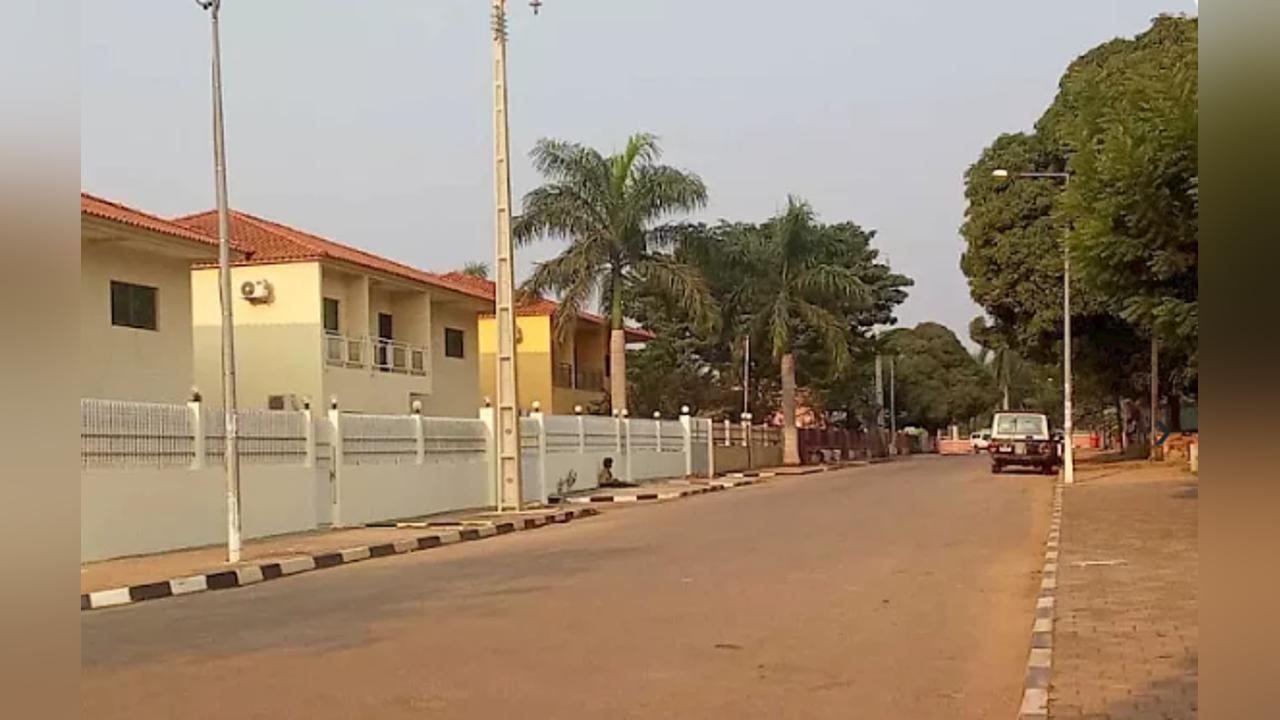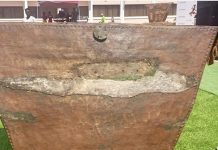Africa-Press – Angola. The city of Mbanza Kongo, administrative seat of Angolan Northern Province of Zaire, celebrates eight years on Tuesday since it was listed as a World Heritage Site by the United Nations Educational, Scientific and Cultural Organization (UNESCO) in 2017.
This feat, which is a source of pride for Angolans in particular and Africans in general, was achieved on 8 July 2017 following the 41st session of the UNESCO World Heritage Committee held in Krakow, in the south of the Republic of Poland.
Among the historical sites and monuments that competed for the inscription of the Historic Centre of Mbanza Kongo on the World Heritage List, the old Cathedral (Kulumbimbi), the House of the King’s Secretary, the Cemetery of the Kings of the former Kingdom of Kongo, Tady Dya Bukikua (former Royal Palace) stand out.
The attributes also include the Secular Tree Yala Nkuwu and the Tomb of Dona Mpolo, mother of King Dom Afonso I, buried alive for disobeying the laws of the Court.
Contacted to discuss the gains and challenges of the aforementioned Historic Centre becoming a world heritage site, the municipal administrator of Mbanza Kongo, Manuel Nsiansoki Gomes, said that since its elevation, the city has seen substantial improvements in several sectors, with emphasis on communication routes, water and electricity.
In the area of electricity supply, the municipal manager said that the city of Mbanza Kongo benefits from this service 24 hours a day, as does the supply of drinking water, thanks to the significant investments that the Executive has been implementing for the benefit of local residents.He also spoke of projects linked to the education and health sectors. Here, the administrator highlighted the construction of the Zaire General Hospital with 290 beds and hospital services that were previously unavailable in the province, such as haemodialysis.The works on this impressive health infrastructure are progressing at a fast pace on the outskirts of the city of Mbanza Kongo and could be completed in December this year.
When asked about compliance with UNESCO recommendations on Mbanza Kongo, Manuel Nsiansoki Gomes said that a lot of work has already been done in this area, with emphasis on the removal of the buffer zone of the metal antennas of telecommunications operators, as well as the construction of a new airport, currently underway in the commune of Nkinde, to decommission the current one located in the “heart” of the city.“There is another project to requalify the city of Mbanza Kongo, the survey work for which is progressing satisfactorily”, he said.He explained that this project will culminate in changes to the image of the main urban and peripheral areas of this World Heritage city, as well as the installation of statues of some historical figures in some corners of the historic city.The administrator invited national and foreign companies to invest in the district, especially in the tourism sector, with the construction of more hotels and similar units to attract more tourists.City dwellers’ point of viewCity dwellers interviewed ,expressed their satisfaction with the progress that the city has seen in recent years, in a variety of areas.They spoke of the arrival of asphalt to the outlying neighborhoods of Mbanza Kongo, as well as the expansion of the drinking water and electricity distribution network to remote areas.In the meantime, the interlocutors called for more structural actions linked, above all, to housing and leisure and entertainment spaces.“A central area for Mbanza Kongo would resolve the housing issue, which affects the local population, and would contribute to changing the image of our city”, said Makiesse Afonso, 20 years old.For Odete Tavares, a resident of the Álvaro Buta neighbourhood, one of the areas with the most asphalted streets, she stated that the current state of her neighbourhood is a reflection of the actions that the Executive is carrying out for the well-being of the population.“Today, those who live in the Álvaro Buta neighborhood no longer have to worry about dust or mud in rainy weather. We have paved and well-lit roads,” he said.The city of Mbanza Kongo has an estimated population of 150,000 inhabitants, spread across the neighborhoods of Sagrada Esperança, Álvaro Buta, Martins Kidito, 11 de Novembro and 4 de Fevereiro.Brief history of Mbanza KongoSince the founding of the Kingdom of Kongo in the 13th century, the city of Mbanza Kongo has been its capital, political, economic, social and cultural centre, seat of the king and his court and, as such, the centre of decision-making.According to its historical and cultural origins, the most important name for Mbanza Kongo at the time was Kongo Dya Ntotela, a symbol of unity and indivisibility of the Bakongos.Throughout the colonial period, the city had several names, with the most prominent being São Salvador do Congo, a name that the Portuguese had given it according to their wishes, already as a colonising power.Before the current commemorative date (8 July), resulting from its elevation to World Cultural Heritage, Mbanza Kongo celebrated its anniversary on 25 July.According to reports, July 25, 1506 was established by King Nimi a Lukeni, founder of the Royal Court of the then Kingdom, as the date on which the adjacent Kingdoms would travel to Mbanza Kongo to pay tribute.As geographical boundaries, the municipality of Mbanza Kongo, with an area of 7,651 square kilometers, is bordered by the municipalities of Cuimba and Luvo to the North, the province of Uíge to the South and East, and the municipalities of Nóqui and Tomboco to the West.Today, Tuesday, the province of Zaire observes a local holiday in commemoration of the declaration of the elevation of the Historic Center of Mbanza Kongo to the category of World Cultural Heritage.
For More News And Analysis About Angola Follow Africa-Press






